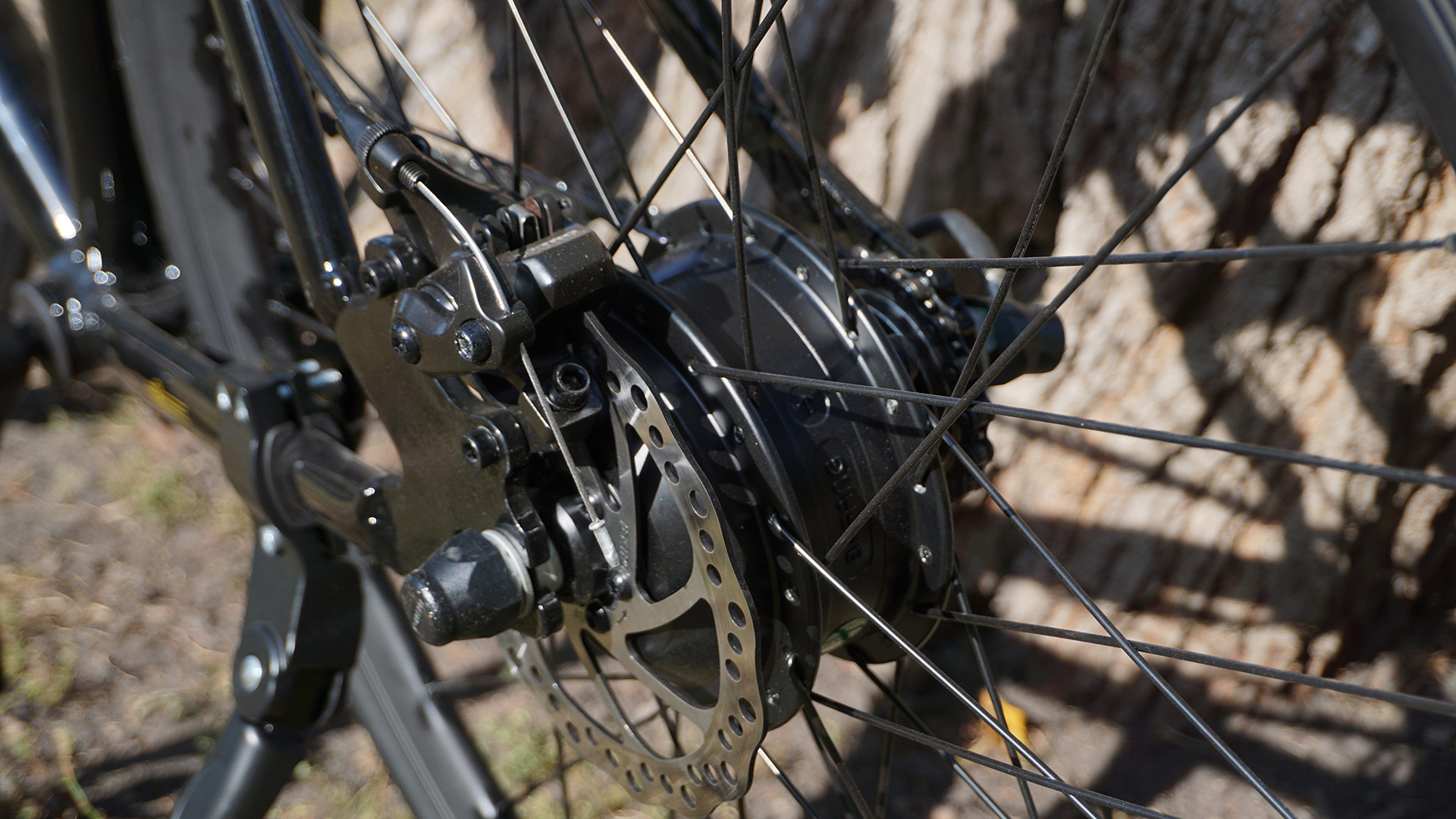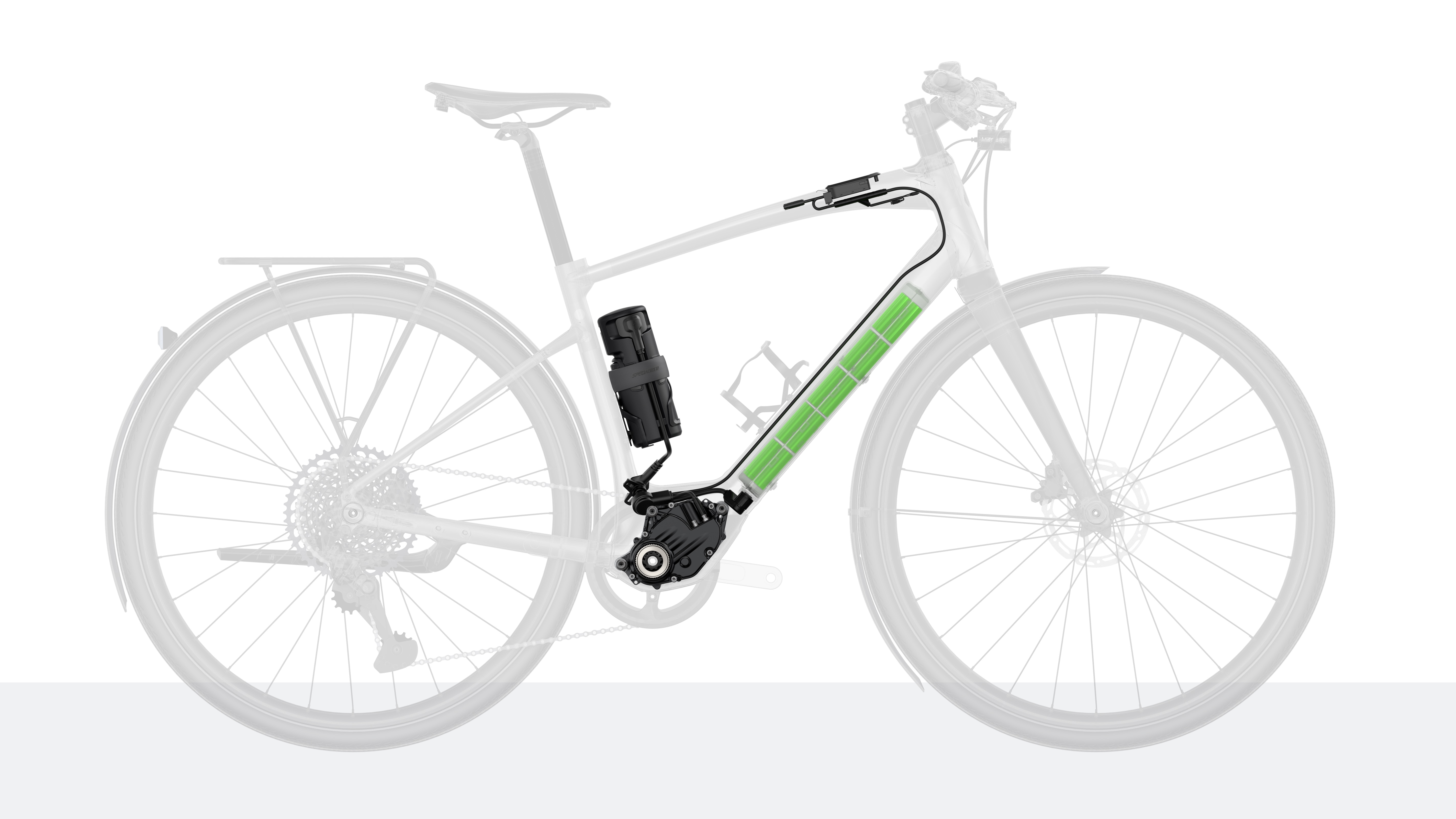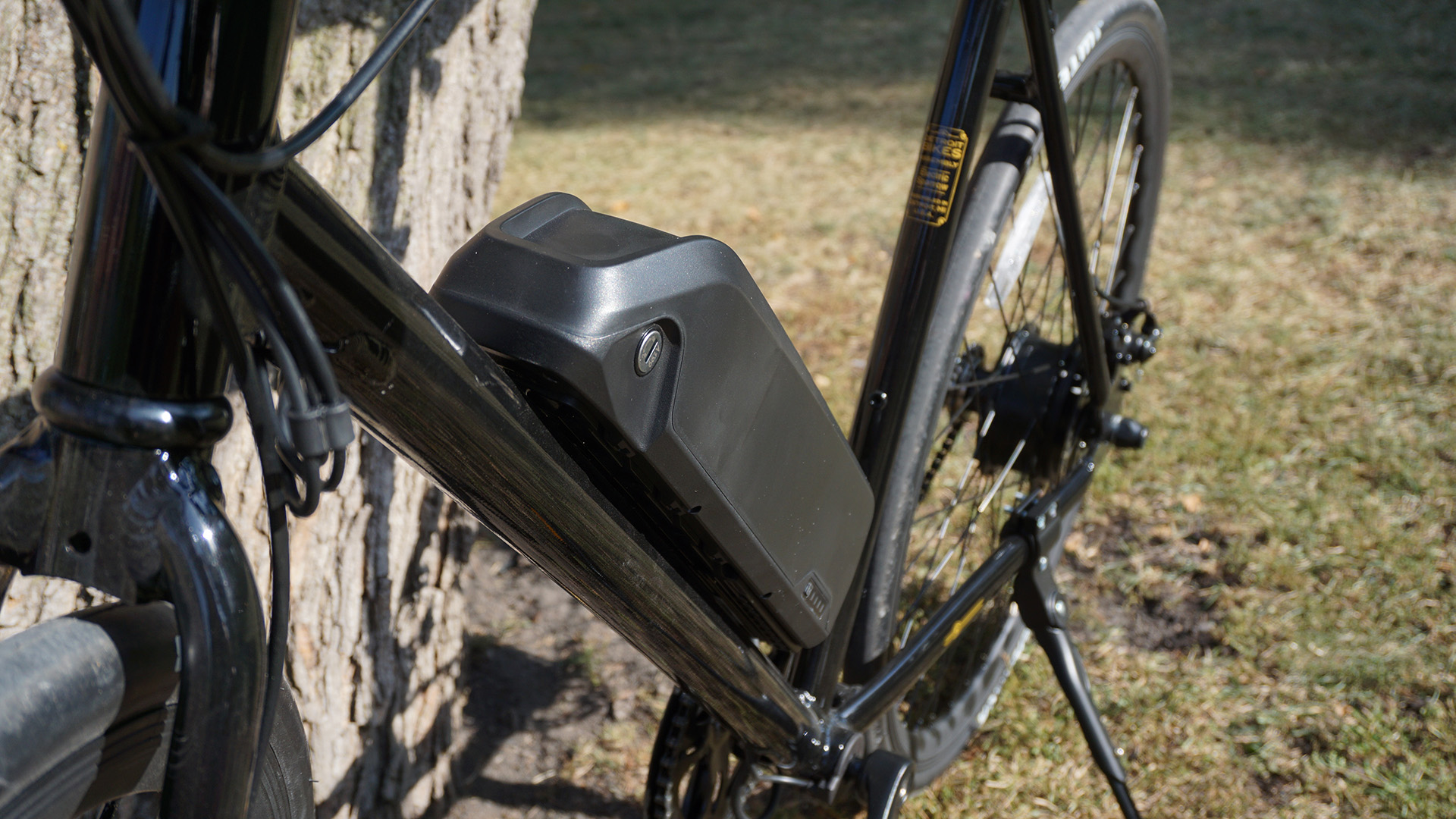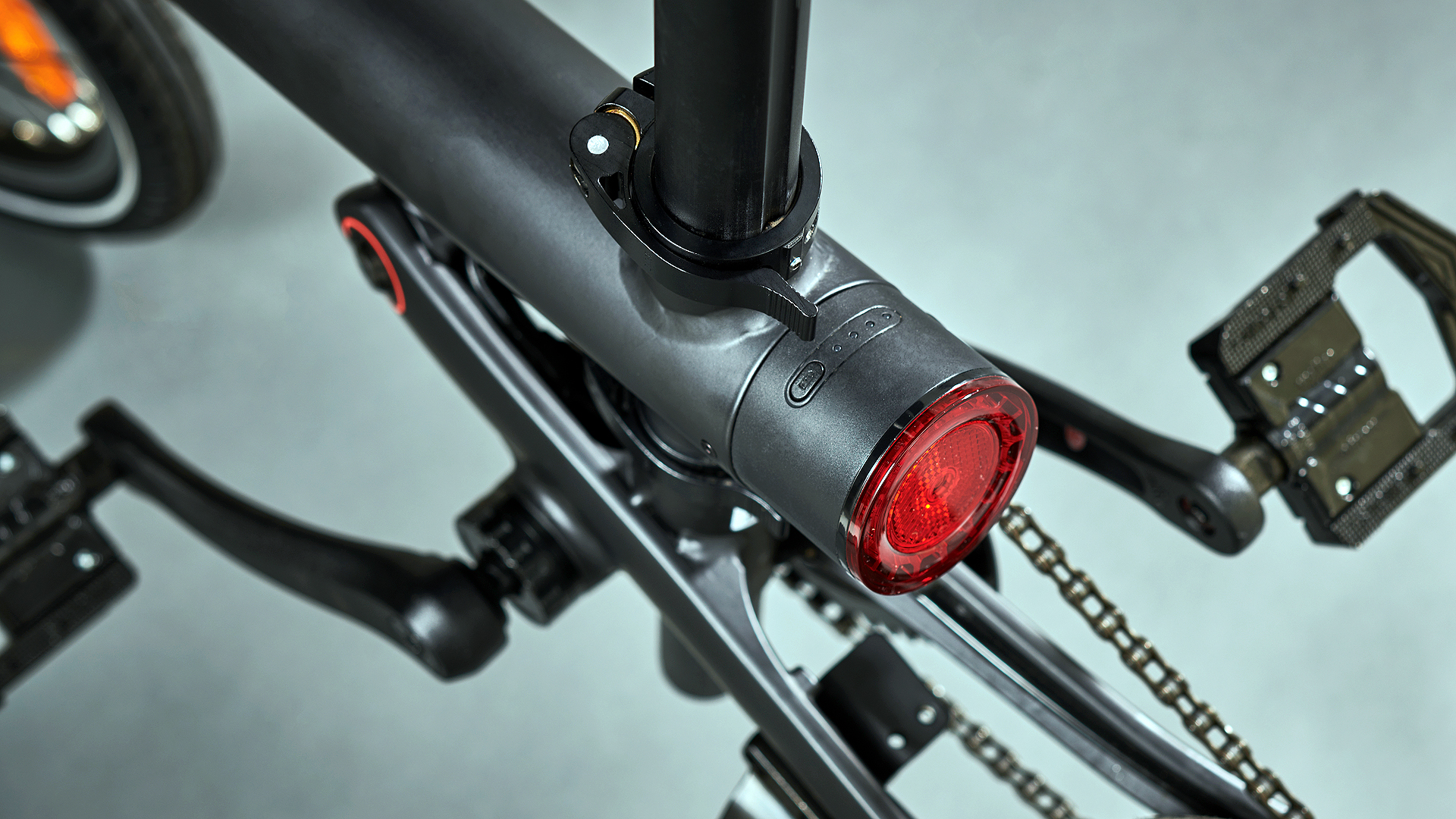

Choosing a bike is a complicated enough task normally. You’ve got to find a model that fits you comfortably, supports your height and weight, and can suit your use cases. Factoring in the motor, electronics, and battery that come with an electric, or e-bike, just complicates things further. But, we’re here to help you figure out the most important details so you can make a more confident buying decision, understanding how each aspect of the e-bike will come into play.
Once you've got a better understanding of what you need, you'll find all the best electric bikes in our handy buying guide.
What to look for in an electric bike
What to look for in an electric bike: size and weight
Above all else, you still need to make sure the e-bike you’re getting is one that’s going to work for you as a rider and fit into your life. Finding a proper fit with any bike takes work. You could go to a bike shop and get help with this, but you’ll at least want to make sure you’re noting the sizing guides offered by the bike manufacturer.
While some bikes will list a height range that they are a good fit for, we’d recommend avoiding a bike if you’re near the cut-off point of that range. Going with a bike that’s a poor fit for you can result in uncomfortable and even unsafe riding positions.
E-bikes generally have a lot of extra hardware attached to them, making them heavier than your usual bike. Don’t be surprised to find some e-bikes topping 50 pounds, especially if you’re looking at options with larger batteries, higher-wattage motors, or racks and other accessories.
If you’ll have to frequently haul the bike up a couple of flights to store it in an apartment or need to mount it on a car’s roof rack frequently, that added weight can become a serious impediment. But, if you’ve got a garage and don’t need to lift the bike often, you can get away with opting for a heavier e-bike.

Rear hub motor
What to look for in an electric bike: motor and drivetrain
The key differentiator of an e-bike is the built-in motor that gives you an assist while you’re riding. These come in primarily two forms: hub motors and mid-drive motors. There are some other types as well, like friction drives, but these are less common and we don’t recommend them.
Get all the latest news, reviews, deals and buying guides on gorgeous tech, home and active products from the T3 experts
Which motor type you aim for will depend somewhat on your use cases and budget. In general, you’ll find hub-drive e-bikes at lower prices than you’ll find mid-drive motors.
Hub drives are built into your wheel, commonly the rear but sometimes the front, and they add motor power on top of your pedaling by spinning up the wheel themselves. Mid-drives are built into the bottom bracket of the bike with the crank arms attached to the motor. As you pedal, the mid-drive motor will add extra power into the rotation, making the work easier on your legs.
The drivetrain also becomes an important consideration when paired with the motor. Using a mid-drive motor, you can still enjoy a multi-speed drivetrain, and the motor can assist you in whichever gear you choose. Since the motor is pulling on the chain, it’ll also be applying that assistance in gear, so you can get extra torque for climbing steep hills or for cruising at top speeds depending on the gear you choose.
That extra power going into your chain can wear it out faster, but chains aren’t an expensive part to replace regularly. This also means you’re dealing with the added complexity of a multi-speed drivetrain, which may be unimportant for casual riders in flat regions.

Specialized's Turbo Vado SL 5.0 with a mid-drive motor
A hub drive will operate independently of your gearing, so it won’t benefit from the extra mechanical advantage you can get from different gears. But, some hub drives will let you run them without actually applying any of your own force through the pedals, which can make for easy cruising. Hub drives also come in two types: geared and direct-drive.
The long-story-short is that geared hubs handle acceleration better while direct-drive hubs handle high speeds better, so geared hubs are preferable for stop-and-go riding in cities while direct-drive hubs could be more useful for long-distance, flat riding. Though you can find multi-speed drivetrains on hub-motor bikes, the gearing effectively just changes how much you can assist the motor at various speeds and not how much the motor can assist you.
Both types of bikes can achieve high speeds with legal limits standing in the way more than any limitations of the motor types.
What to look for in an electric bike: drive methods
Just as important as the type of motor you get is how you’re able to use it. You’ll find a variety of methods that fall into one of two categories: pedal assist and throttle assist.
Pedal-assist e-bikes run their motors when you’re actively spinning the pedals. This means you’re generally going to be doing some of the work yourself (unless the back wheel is spinning so fast that your pedaling doesn’t actually engage the ratchet mechanism inside the wheel).
Pedal-assist systems can operate based on the speed you’re pedaling using a cadence sensor, so it will provide more power the faster your pedal, or they can use a torque sensor to provide more power as you push harder into the pedals.
Torque sensors are more expensive but provide more nuanced control over the motor. Cadence sensors are cheaper, but they force you to do a little extra work to get the bike started from a standstill, since the motor won’t kick in until you’ve partially rotated the pedals.
Throttle assist is just what it sounds like. Some e-bikes include a hand- or thumb-operated throttle that will let you ramp up the motor to do all the work for you. This is a somewhat common add-on, but usually, you’ll find it in addition to a pedal-assist system.

What to look for in an electric bike: battery
Your e-bike won’t do a thing if it doesn’t have a battery, so it’s important to consider the battery your bike is coming with. You’ll get your battery capacity measured in watt-hour (Wh), which is the product of the battery’s voltage and amp-hours. The more watt-hours the battery has, the more power you’ll be getting out of it (and the heavier it’s likely going to be). You’re liable to find batteries ranging from roughly 100Wh to 1,000Wh.
There’s no hard and fast rule about how far one battery will get you, but a 1000Wh battery would get you farther than a 250Wh one attached to the same bike. Your actual range will vary based on a ton of variables from the terrain you’re biking on, the weather (cold really saps a battery), the combined weight of you and the bike, and how much assistance you’re getting from the motor alongside your own efforts.
A smaller battery may do if you just want a little assistance accelerating while a battery on the larger end of the range would be good if you intend to rely heavily on the motor or go for single rides longer than 20 miles.
Most manufacturers will provide an estimated range their equipment is capable of based on the battery included with the bike, though you’ll likely want to take these with a grain of salt and compare it against reviews. Thankfully, these are still bikes at the end of the day, so if your battery runs out, you can just pedal home.
You should also note the charging speed of the battery. This can vary based on the capacity of the battery and the power of the charging brick. As it can take several hours to juice up these large batteries, you may want to consider extra batteries if you plan to do extra-long rides and can’t build in longer stops.
Many e-bikes have readily detachable batteries, making it easy to swap packs or remove the pack for charging. Some have them integrated into the bike though, in which case you won’t have the option to quickly swap batteries and keep on riding without needing a recharge.

What to look for in an electric bike: safety features
Safety is an important consideration when biking, and there are many safety features you can find on e-bikes. Given the high speeds you can reach on many electric bikes, a good set of brakes can be crucial. While the verdict is out on disc brakes vs. rim brakes, many would agree disc brakes will stop you better in wet conditions, so they’re worth considering if you’re not an exclusively sunny-weather rider.
Many e-bikes will include a special motor cut-off switch in the brake levers. With these, power will stop going to the motor whenever you pull the brakes. This is not only helpful for being able to stop faster but also provides a way to easily cut power in an emergency.
If you have a mid-drive motor on a multi-speed drivetrain, you may also benefit from a shift sensor. This signals to the motor when you’re shifting gears so it doesn’t apply power when the chain is switching between cogs, thereby protecting your gears.
It can also be handy to have built-on lights. If they run off of the e-bike's battery, you’ll always have them available as long as your bike is charged up. Of course, it’s not difficult to add on aftermarket lights.
What to look for in an electric bike: convenience features
Just as you’ll want a bike that fits your body, you’ll want one that fits your needs. So, you should ensure that the bike you’re picking out supports or includes the features you want. For instance, not every bike is designed to accommodate a rack and some have hardware that’s in the way
Kickstands can add more weight, but they’re convenient if you’re often jumping on and off your bike and don’t always have a place to prop it up. Built-on fenders or attachment points will come in clutch if you’re often riding on wet roads and want to stay clean. Since e-bikes tend to have a lot more cabling than traditional bikes, it can also be a nice touch when manufacturers opt to use internal cable routing.

Mark Knapp has covered tech for most of the past decade, keeping readers up to speed on the latest developments and going hands-on with everything from phones and computers to e-bikes and drones to separate the marketing from the reality. Catch him on Twitter at @Techn0Mark or on T3, PCMag, IGN, TechRadar, Business Insider, and Reviewed.